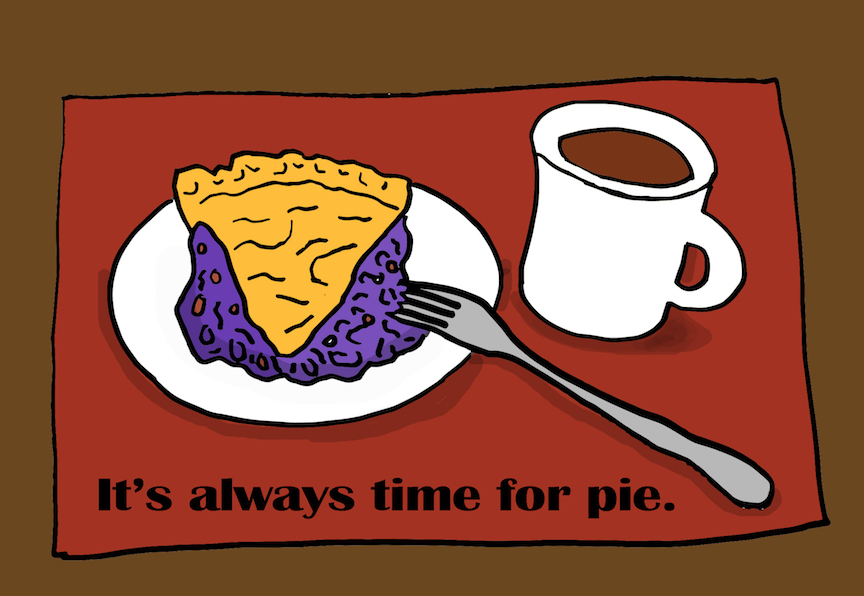No one knows how much time they have on earth. We act as if we must take care of ourselves so we can live to be 100. But how many of us make it to that age? And do you really want to?
Maybe it’s time to wake up and reshuffle the deck. Starting with a piece of blueberry pie for breakfast. It’s not as deviant as you may think. Pie’s a pastry, after all. It’s meant for breakfast since it goes great with coffee. Plus wth breakfast pie, you have all day to burn off the calories. And what goes better with pie than ice cream? Add a dollop of vanilla with your pie; it’s no different than putting cream in your coffee.
“The pie is an English institution, which, planted on American soil, forthwith ran rampant and burst forth into an untold variety of genera and species. Not merely the old mince pie, but a thousand strictly American seedlings from that main stock, evinced the power of American housewives to adapt old institutions to new uses.” – Harriet Beecher Stowe 1869 novel “Oldtown Folks.”
Pie became so strongly identified with America by the 19th century that writers and journalists from both near and far declared Americans to be suffering a kind of pie madness. New Englanders, who were particularly prone to pie-eating, made good fodder for satire and good targets for scolding by increasingly health-conscious cookbook writers. As more Americans traveled abroad and became acquainted with European food culture, it became fashionable to condemn pie as food for the “rustic.”
Ralph Waldo Emerson found pie to be just such a pleasing medium, as his friend James Thayer recalled, describing a breakfast taken with Emerson and friends in the 1870s. Pie, Thayer reported, “at breakfast was one of Mr. Emerson’s weaknesses.” Emerson offered slices to his fellow diners, who one by one declined, prompting him to protest in humor, “but … what is pie for?”

